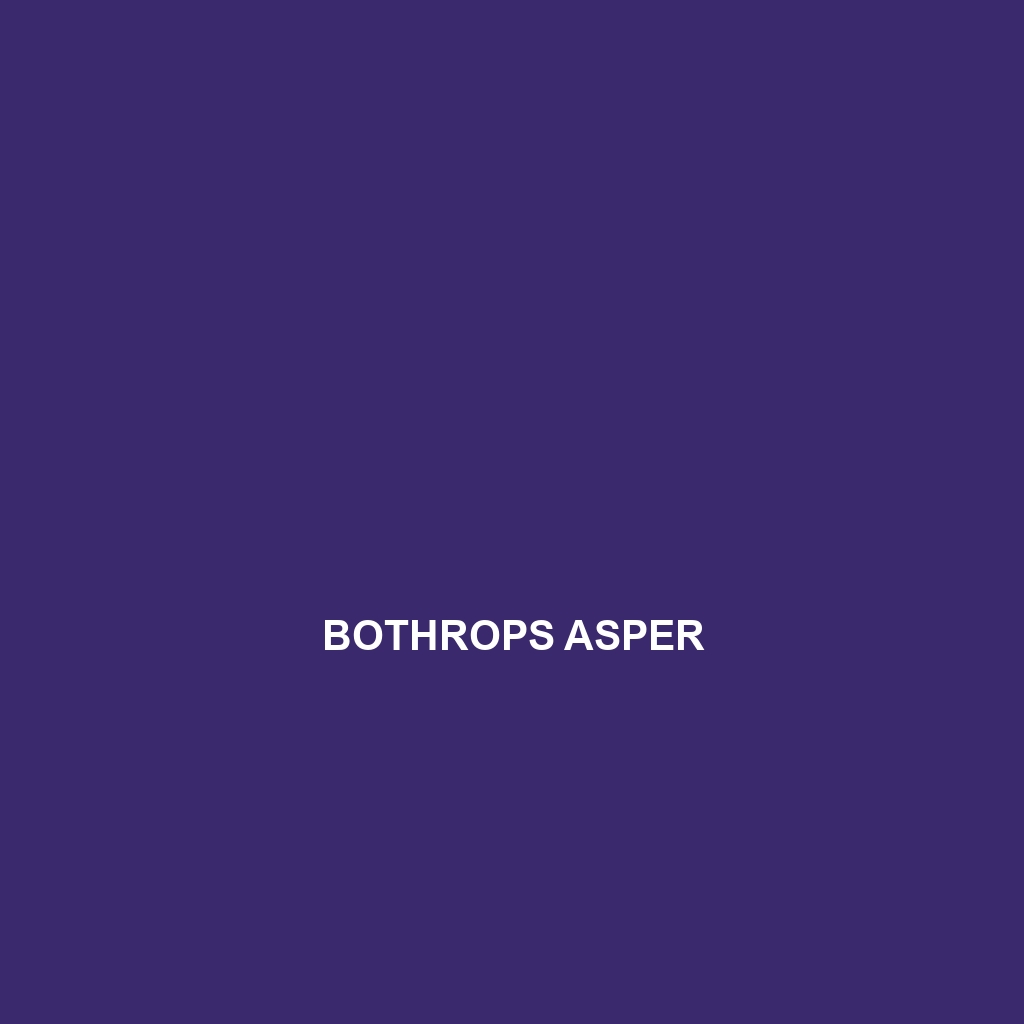Species Description: Bothrops asper
Common Name: Bothrops asper
Scientific Name: Bothrops asper
Habitat
Bothrops asper, commonly known as the Terciopelo or Fer-de-Lance, is primarily found in Central America and parts of South America. Its range extends from southern Mexico to western Colombia and Ecuador. This species inhabits a variety of environments including tropical rainforests, wet lowlands, and mountainous regions. Bothrops asper prefers areas with dense foliage which provides adequate cover and hunting ground, often being located near rivers and streams.
Physical Characteristics
This large pit viper can grow up to 2 meters (approximately 6.5 feet) in length. Its coloration varies from light brown to grayish-green, often adorned with dark brown or black banding patterns that offer excellent camouflage against the forest floor. A distinctive feature of Bothrops asper is its pronounced triangle-shaped head and slit-like pupils, which enhance its predatory capabilities. The scales are rough, adding to its rugged appearance, while its coiled body can be both powerful and agile.
Behavior
Bothrops asper is primarily nocturnal, being most active during the evening and nighttime. It exhibits ambush predation behavior, often lying still and camouflaged until a suitable prey approaches. This species is known for its defensive behavior; when threatened, it may inflate its body and display its striking colors. Bothrops asper is territorial and can be aggressive when provoked, making it a significant concern for those venturing into its habitat.
Diet
The diet of Bothrops asper mainly consists of small mammals, birds, and occasionally amphibians. Its feeding habits are characterized by a strike-and-release technique, utilizing potent hemotoxic venom to immobilize prey efficiently. This opportunistic feeder often hunts in the leaf litter during the night, taking advantage of its excellent sensory adaptations to locate and capture food.
Reproduction
Bothrops asper is ovoviviparous, meaning that females give birth to live young rather than laying eggs. The breeding season typically occurs during the rainy months, where males engage in combat for access to females. After a gestation period of about 6 to 9 months, females can give birth to 10 to 50 offspring, which are fully developed and ready to fend for themselves upon birth.
Conservation Status
Currently, Bothrops asper is listed as “Least Concern” on the IUCN Red List; however, habitat destruction and deforestation pose potential threats to local populations. Increased human encroachment and road fatalities also contribute to its vulnerability in certain regions, thus ongoing monitoring of their status is recommended.
Interesting Facts
Bothrops asper is known for its remarkable ability to detect infrared radiation through specialized pit organs, allowing it to accurately target warm-blooded prey even in complete darkness. This species is also culturally significant in some regions, where it is associated with local folklore and medicinal practices.
Role in Ecosystem
Bothrops asper plays a crucial role in its ecosystem as both a predator and prey. As a top predator, it helps regulate populations of rodents and other small mammals, which in turn influences vegetation dynamics. Additionally, it serves as a food source for larger predators, contributing to the overall biodiversity and health of its habitat.
